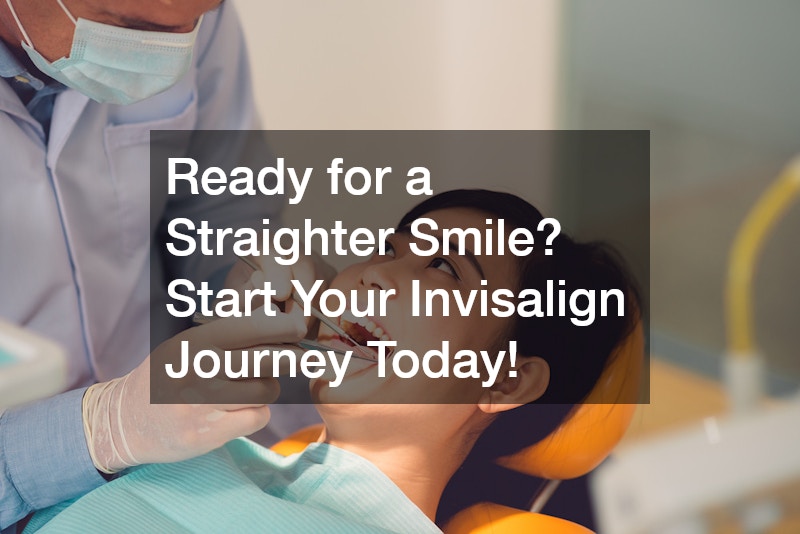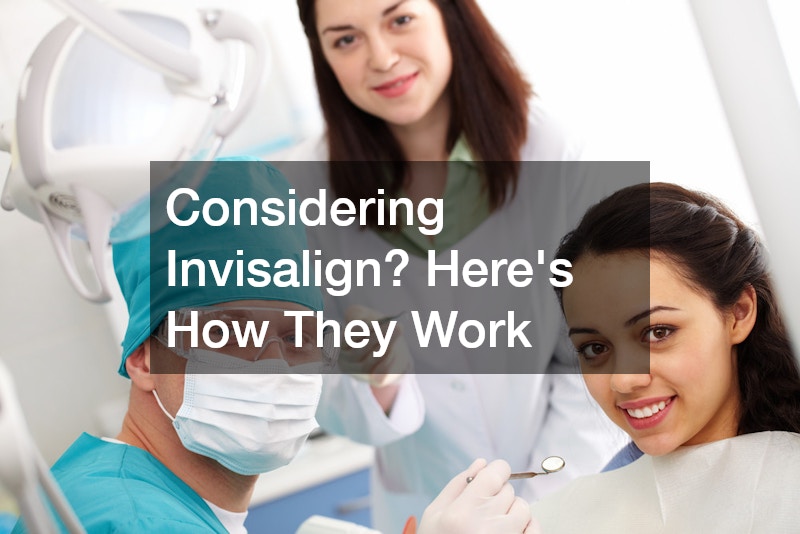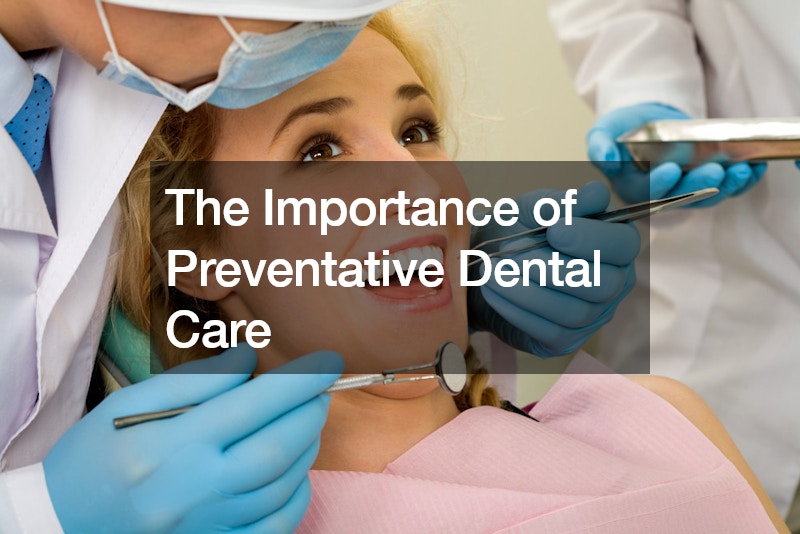In the world of orthodontics, Invisalign has revolutionized the way teeth alignment issues are addressed. As a modern alternative to traditional braces, Invisalign provides an attractive solution for those seeking a less intrusive treatment method. But how exactly does Invisalign work? This article will dive into the mechanics, benefits, costs, and results of Invisalign treatment.
How Does Invisalign Work?
The Basics of Invisalign Technology
The Invisalign system uses a series of clear, removable aligners made from a smooth, comfortable plastic material. These aligners are custom-made to fit your teeth, gradually shifting them into their desired positions. This process is carefully orchestrated using advanced 3D computer imaging technology to map out your entire treatment plan from start to finish.
Each set of aligners is typically worn for one to two weeks, during which subtle pressure is applied to move teeth incrementally. It is the successive application of these custom-fit aligners that results in significant teeth realignment. The precise movements required are achieved through sophisticated algorithms used in creating each aligner.
Unlike traditional braces, Invisalign aligners are practically invisible, making them an appealing option for adults and teenagers wishing to avoid the stigma of metal braces. Since they are removable, they also promote better oral hygiene. Treatment effectiveness stems from patient discipline in wearing the aligners 20 to 22 hours a day.
Custom Treatment Plans
Every Invisalign treatment plan begins with a consultation, during which dental professionals take X-rays, pictures, and impressions of your teeth. These images are input into a computer to create a digital 3D model of your teeth and gums. Orthodontists customize each aligner to apply the right amount of force at the right time.
This digital roadmap allows orthodontists to visualize the step-by-step transformation of your smile. Patients are often shown a digital representation of how their teeth will change over time, giving them a clear idea of what to expect. The highly personalized nature of this treatment is one reason for its success.
Once the treatment plan is finalized, a series of custom aligners is created just for your smile. Regular follow-up appointments ensure the treatment is progressing as planned. Adjustments can be made along the way if necessary, optimizing the path to your desired results.
Wearing the Aligners
The effectiveness of Invisalign over traditional braces hinges on patient compliance. Patients must wear their aligners for at least 20 to 22 hours per day, taking them out only for eating and oral care. This continuous wear not only maximizes the treatment’s efficacy but also ensures that desired results are achieved in the shortest possible time frame.
Patients are advised to change aligners approximately every one to two weeks, following the specific directives of their orthodontists. This changeover is pivotal since each new aligner is programmed to move the teeth slightly more than the one before. Compliance with wearing the aligners as per instructions is crucial for the timely and successful realignment of teeth.
What Are the Benefits of Using Invisalign?
Aesthetic Advantages
One of the primary benefits of Invisalign is its near-invisibility, which can be a significant confidence booster for many patients. Unlike metal braces, Invisalign aligners are made from clear plastic, making them difficult to notice. This aesthetic advantage allows patients to smile freely and maintain their self-esteem during treatment.
For adults who do not want their professional image compromised, or for teenagers conscious of their appearance, this non-intrusive option becomes incredibly appealing. The ability to participate in social interactions without the distraction of metal braces is a significant advantage. Wearers often report feeling more comfortable speaking and smiling in public.
Comfort and Convenience
Invisalign aligners are designed for maximum comfort. Made from smooth plastic, they do not irritate the gums and cheeks as traditional braces might. This lack of discomfort leads to a more painless orthodontic experience, which in turn supports better patient compliance.
Another significant benefit is the convenience offered by these clear aligners. They can be easily removed, allowing patients to eat without restrictions common to traditional braces. This feature is notably beneficial for maintaining oral hygiene, as it permits regular brushing and flossing without the interference of wires and brackets.
Removable Aligners
The removable nature of Invisalign aligners offers significant flexibility for users, especially when it comes to eating and maintaining oral hygiene. Unlike traditional braces, which often restrict certain types of foods, Invisalign allows patients to eat what they like by simply removing the aligners. This adaptability makes it easier for patients to enjoy meals without the worry of damaging their orthodontic treatment.
Furthermore, oral hygiene is simplified with Invisalign, as aligners can be removed for brushing and flossing. This is a distinct advantage over traditional braces, which can be challenging to clean around. Patients are able to maintain better dental health throughout treatment, reducing the risk of cavities and gum disease.
What Kind of Results Can You Expect?
Timeframe for Treatment
The average Invisalign treatment takes around 12 to 18 months, but this can vary based on the patient’s specific dental needs. Simpler cases, like minor shifts or adjustments, may be completed in as little as six months. Conversely, severe malocclusions or complex cases may require up to two years to achieve the desired results.
Regular check-ins with the orthodontist ensure that treatment is progressing as anticipated. These appointments are crucial for making adjustments and monitoring how teeth respond to each new set of aligners. Patients adhering to prescribed guidelines are more likely to complete treatment within projected timeframes.
Factors such as age, dental history, and overall oral health can influence the length of treatment. Younger patients may experience quicker adjustments due to their growing and more adaptable dental structure. Nevertheless, commitment to following the treatment plan remains the cornerstone of timely completion and effectiveness.
Effectiveness for Various Dental Issues
Invisalign is effective for treating a range of dental alignment problems, including overcrowded teeth, gaps, overbite, underbite, and crossbite. While it effectively addresses many common alignment issues, there are instances where traditional braces might still be the better solution, particularly for complex cases. Consulting with an orthodontist will clarify whether Invisalign is appropriate for specific conditions.
The system employs precise force to gently move teeth into the correct position over time. Its effectiveness hinges on both the quality of the treatment plan and the patient’s compliance with aligner wear. For patients with straightforward orthodontic needs, Invisalign often serves as a highly effective method of achieving a straighter smile.
For more advanced misalignments, orthodontists may use a hybrid approach, combining traditional methods with Invisalign treatment. This flexibility allows for addressing a broader spectrum of issues. Discussing treatment options with an expert is advised to ensure best practices are employed in achieving optimal dental health and aesthetics.
Post-Treatment Care
Once the orthodontic goals with Invisalign are achieved, maintaining the results requires a commitment to post-treatment care. Often, this involves the use of retainers to prevent teeth from gradually shifting back to their pre-treatment positions. These retainers can be either removable or fixed, offering various advantages based on patient preferences and dental needs.
Wearing retainers as recommended is essential to preserving the alignment obtained through Invisalign. Typically, patients are advised to wear retainers full-time initially, then gradually reduce wear as teeth stabilize. Compliance with post-treatment instructions ensures that the smile acquired through significant time and investment is maintained long-term.
The orthodontic journey doesn’t conclude once the aligners are removed. Continued orthodontic follow-ups help monitor long-term results and address any emerging issues. This phase is crucial in solidifying the new teeth alignment and preventing regression, safeguarding the benefits achieved through Invisalign treatment.
Invisalign represents an innovative step in orthodontic care, offering a less intrusive and highly effective way to align teeth. With a comprehensive understanding of how they work, the associated benefits, costs, and potential results, individuals can make an informed decision on whether this treatment is right for them. Consultation with an orthodontic specialist is recommended for personalized advice and treatment planning.




